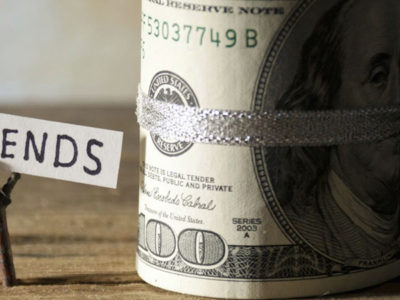Fear of Missing Out and Desire for More
I’ll state up front what I think is obvious – we’re in the midst of a speculative bubble in the stock market. The long bull market that began in 2009, only briefly interrupted by the COVID-19 Crash in Q1 2020, has finally morphed into a fully-fledged bubble. The market now features all the defining characteristics of prior bubbles – irrational investor behavior, extreme valuations, record-setting IPOs, explosive price action, and the generally-accepted belief that prices will continue to rise, indefinitely.
How do we know it’s a bubble?
Well, a good place to start is to accurately define a bubble. The common definition, “rapid escalation of prices and excessive valuations” is agreed upon by most, but this definition doesn’t help us understand when markets are showing signs of irrational exuberance. In his book titled “The Psychology of Money – Timeless Lessons on Wealth, Greed and Happiness” Morgan Housel writes, “Bubbles form when the momentum of short-term returns attracts enough money that the makeup of investors shifts from mostly long term to mostly short term.” This is a more helpful definition.
Bubbles aren’t just about overvaluation. Sure, ridiculous prices are a feature of all bubbles, but elevated valuations are simply a result of short-term traders dominating the market, attracting more traders with the same mindset, and ultimately becoming the “price setters.” Housel writes, “The formation of bubbles isn’t so much about people irrationally participating in long-term investing. They’re about people somewhat rationally moving toward short-term trading to capture momentum that has been feeding on itself.”
Markets that are driven by short-term traders, with a time horizon of perhaps hours, are extremely dangerous. And, the problem is that most investors fail to recognize the behavior of short-term traders who are playing a different game. Short-term speculators don’t care where stocks will be priced years from now – they only care where prices will be perhaps hours from now, or at the end of the trading day. Prices that look attractive to the short-term trader might be prohibitively expensive and unattractive to a long-term investor. Speculators have completely different priorities than investors with retirement money in the market.
The key takeaway here is to try to recognize when markets are dominated by short-term traders setting prices at elevated and unsustainable levels. And, if you’re a long-term investor, know that you’re playing a very different game, and today’s prices may make no sense for you. As Housel astutely points out, “Bubbles do their damage when long-term investors mistakenly take their cues from short-term traders.”
How can we be sure we’re witnessing irrational investor behavior?
Bubbles may differ from each other over time, but the psychology is consistent. For the first 10 years or so following the crash during the Great Recession (2008-09), we didn’t really see wild speculation in the stock market, but that all changed soon after the COVID-19 Crash. Beginning in April 2020, we started seeing manic behavior on the part of the investing public and the frenzy has extended far beyond conventional markets. Bitcoin increased 800 percent from its low in Q1 2020. Tesla gained over 700 percent from its trough last year. Many micro-cap stocks tripled off the lows. The broad-based iShares Micro-Cap ETF (IWC) has shown obscene price acceleration over the past year, up 140 percent. In addition, in 2020 we had more IPOs (480 – including 280 SPACs) than even the 406 IPOs during the 2000 Tech Bubble. The vast majority of these IPOs are unprofitable, yet feature explosive price action, with first-day price jumps of tens or hundreds of percent. SPACs (special purpose acquisition companies), cryptocurrencies and NFTs (non-fungible tokens) are other examples of esoteric opportunities capturing the attention of speculators. We’ve also seen a surge in small option purchases by retail investors – trading has increased 8x compared to 2019 levels.
The broad stock market (S&P 500) also now features the lofty valuations that have been present in prior bubbles. We are at, or close to, all-time high stock valuations when measured by Price-to-Book, Price-to-Earnings and Price-to-Sales. So, we now have all the ingredients that make up a major asset-class bubble – hysterically speculative investor behavior and very elevated valuations.
With stocks priced so high and no room for error, it’s not unreasonable to expect markets to have a dramatic meltdown at some point – that’s what happens when bubbles finally reach a tipping point. We saw it in the aftermath of the 2000 Tech Bubble and again when the 2007 Everything Bubble popped. The bursting of these bubbles decreased household wealth by trillions of dollars – both stocks and real estate were crushed during the Great Recession. It was devastating and led to financial ruin for many. It’s interesting to note that these crashes took place in recent history, yet it appears market participants have very short memories.
Where to hide?
It’s not all bad. Parts of the stock market are still fairly attractive and they might provide a decent hiding spot during the next bear market. Value stocks have lagged growth stocks for much of the past 12 years and are still somewhat reasonably priced at 18x forward earnings estimates. In addition, many value stocks pay dividends that provide much-needed cash flow for retirees. Here are some value-oriented stock ETFs (exchanged-traded funds) to consider:
| Name | Symbol | Annual Yield % | Expense Ratio % |
| Schwab U.S. Dividend Equity | SCHD | 2.9 | 0.06 |
| Vanguard Mega Cap Value | MGV | 2.2 | 0.07 |
| Vanguard High Dividend Yield | VYM | 3 | 0.06 |
| iShares Core Dividend Growth | DGRO | 2.2 | 0.08 |
It’s important to note that in the first 9 months of the brutal bear market in 2000-2002, value stocks actually appreciated by 4 percent while the Nasdaq Composite lost 50 percent and growth stocks tumbled nearly 30 percent. So, perhaps during the next serious downturn, value stocks will also perform relatively well. For now, I still think value stocks are somewhat attractive (growth stocks are priced for perfection), but that might not be the case for much longer. If all stock asset classes soon become wildly overvalued relative to earnings, and forward return potential is well below average or even negative, your best bet to preserve wealth may be to hold cash and/or short-term bonds.
House prices also look frothy.
I’d be remiss if I didn’t mention what’s happening in residential real estate. We’re seeing signs of widespread speculation as home prices soar. In our local market in Los Angeles, prices have skyrocketed and are now up over 100 percent in the past 8 years. We’re witnessing similar behavior to what we saw during the 2006 Housing Bubble. Multiple bids over the asking price have become commonplace. Prospective homeowners believe they must buy now because prices are only going higher, and they’ll be priced out of the market if they wait. Sound familiar? The fact that house prices are surging at the same time as stocks isn’t comforting – it’s eerily reminiscent of the euphoric period leading up to the crash in 2008-09.
I’m guessing my concerns about bubbles forming in stocks and real estate will mostly fall on deaf ears. I don’t blame you – I could be wrong. It’s impossible to call the top of a bubble and prices could continue to soar as the economy recovers from the COVID-19 economic lockdowns. But, make no mistake, eventually this bubble will pop, no matter how hard the Federal Reserve tries to support it. Don’t overestimate your risk tolerance.
At the time of publication, Stuart Chaussee and/or his clients held positions in SCHD, MGV, VYM and DGRO. Holdings can change at any time. Under no circumstances does the information in this column represent investment advice or a recommendation to buy or sell securities.


